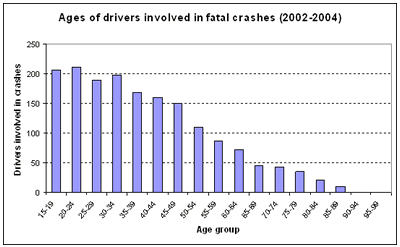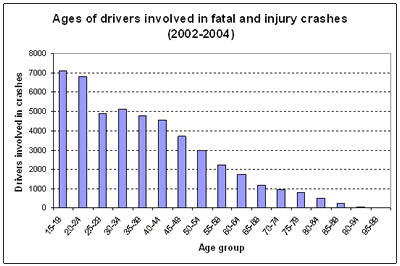This rule specifies the requirements for obtaining and renewing a driver licence or licence endorsement in New Zealand. It also specifies the requirements for driver licensing service providers.
Note: Each link also includes access to consultation materials, such as summaries of submissions and frequently asked questions (FAQs) related to each version and amendment.
Questions and answers are provided to accompany a new rule or amendment when they are signed. These and other consultation documents on this page have not been updated to take into account any later rule amendments and are retained for historic interest only.
The Rule provides the legal basis for changes to be made to driver licensing requirements for drivers aged 75 and over.
The new system will remove the mandatory on-road driving test that is currently needed to re-license at age 80 and two yearly afterwards. The medical certificate of fitness to drive will remain, however, with referral and support systems for GPs and health practitioners. Education and information for GPs, health practitioners and older drivers will also be emphasised.
The main features of the new system will be:
The new system will be introduced on 4 December 2006. Until then drivers 80 and over who are due to renew their licence must continue to follow the existing Rule requiring a medical certificate and a practical on-road driving test.
The Land Transport (Driver Licensing) Amendment Rule (No 2) 2006 has just been signed by the Minister for Transport Safety and Gazetted. Land Transport New Zealand must now begin changes to information systems and the medical system, training, and preparation of communications materials for older persons, GPs and the community. A lead time of five months is required to ensure that all these systems are in place.
The popular Safe with Age courses for older drivers currently reach about 5,000 people per year. $550,000 per annum in new funding is being provided to enhance course content and expand Safe with Age to reach about 8,000 older drivers per annum over the next three years. More courses will be provided in the areas with greatest concentrations of older people, and new courses will be introduced in areas where they are not currently provided.
Safe with Age is a road safety awareness and road rules refresher course for persons over the age of 55. The free courses are run by local groups, such as Age Concern, and coordinated by Land Transport New Zealand.
From early next year, as part of the changes to older driver licensing, the government will provide a subsidy to Safe with Age participants who wish to further improve their driving skills by taking a private on-road driving lesson.
Other education tools and information products to support the introduction and ongoing operation of the new re-licensing system are under development. More details will be available from Land Transport New Zealand later in 2006.
Revised medical form
The Ministry of Transport and the Land Transport New Zealand medical section have been working closely with the Royal New Zealand College of General Practitioners and other relevant health and medical sector groups to make changes to the current Medical Certificate for Driver Licence that GPs are required to complete when providing a recommendation on a patient’s fitness to drive.
GP education
There will also be a number of initiatives designed to help GPs and other health practitioners in understanding, preparing for and adjusting to the new licensing system. This will include a series of free regional education seminars for GPs in major centres, articles in relevant print and electronic journals, in newsletters and on key websites.
Referral systems
The new licensing system provides a number of options for GPs following the assessment of their older patients for medical conditions.
In most cases, an older driver will pass their medical and proceed directly to the licensing agent, pay their fee, and renew their licence.
In other cases, GPs will be happy for their patient to re-licence with an appropriate condition on their licence, (e.g. no night driving or a distance restriction). Land Transport New Zealand will provide information and guidance to GPs on the range of licence conditions / restrictions that they can recommend for patients and when these may be appropriate.
In certain circumstances, where a GP has examined and decided that a patient 75 or over is medically fit, but is uncertain about their ability to drive safely, then GPs can refer them for an on-road safety test. By passing this test, the older driver can demonstrate that they meet the minimum standards of safe driving.
Where there is a question about medical fitness, GPs will be able to refer their patient on for more specialist medical assessments, such as to a gerontologist, Accident, Treatment and Rehabilitation Centre, or in some cases, for an Occupational Therapist driving assessment. The results of these assessments are reported back to the GP, and assist them in completing the medical fitness to drive certificate.
Any final decision about an older person’s licence status rests with the NZ Transport Agency.
Assessment tools
The Ministry of Transport will continue to investigate and monitor the development of assessment tools for fitness to drive through international programmes of research and trials. Should any promising new tools arise the Ministry will work closely with the medical sector to discuss its possible introduction on a voluntary basis or as part of the licensing system.
New Zealand is one of the very few countries that requires drivers 80 and over to undertake a mandatory on-road driving test. The UK, Western European countries, and most Australian and US states have no age- based on-road testing of older drivers. Overall their crash statistics for older drivers are no better or worse than ours.
New Zealand older drivers are generally a safe group. Most older people drive conservatively and adequately self-regulate their driving. Older drivers are responsible for only about 2 percent of road casualties. This is consistent with the percentage of older drivers in the driving population.
Many older drivers say they find taking the over 80s driving test highly stressful, while organisations like Grey Power view the test as discriminatory.
Other reasons for removing the test are:
Older drivers involved in crashes


Casualties from crashes
By comparison
(The table shows the percentages of all drivers involved in crashes that fall within each age group, for fatal and injury crashes separately).
| Percent of drivers of known age | |||
|---|---|---|---|
| Fatal | Injury | Fatal and Injury | |
| 15-19 |
12.1%
|
15.1%
|
15.0%
|
| 20-24 |
12.3%
|
14.4%
|
14.3%
|
| 25-29 |
11.1%
|
10.2%
|
10.2%
|
| 30-34 |
11.6%
|
10.7%
|
10.7%
|
| 35-39 |
9.8%
|
10.1%
|
10.1%
|
| 40-44 |
9.3%
|
9.6%
|
9.6%
|
| 45-49 |
8.8%
|
7.8%
|
7.8%
|
| 50-54 |
6.5%
|
6.2%
|
6.2%
|
| 55-59 |
5.1%
|
4.7%
|
4.7%
|
| 60-64 |
4.2%
|
3.6%
|
3.7%
|
| 65-69 |
2.6%
|
2.5%
|
2.5%
|
| 70-74 |
2.5%
|
2.0%
|
2.0%
|
| 75-79 |
2.1%
|
1.6%
|
1.7%
|
| 80-84 |
1.2%
|
1.0%
|
1.0%
|
| 85-89 |
0.6%
|
0.5%
|
0.5%
|
| 90-94 |
0.1%
|
0.1%
|
0.1%
|
| 95-99 |
0.1%
|
0.0%
|
0.0%
|
| Over 80 |
2.0%
|
1.6%
|
1.6%
|
Full consultation was carried out with a range of interest groups and there were also calls for the public to make submissions. As a result, Land Transport New Zealand received 90 submissions on the public consultation draft. Of these, the majority (77 percent) were in favour of removing mandatory on-road testing of older drivers.
A bound version of the amendment Rule is available for purchase from bookshops that sell legislation or from Legislation Direct, telephone (04) 495 2882. A loose-leaf version will be made available to Rules subscribers from Wickliffe Limited, freephone 0800 226 440. The rule can be viewed on the NZ Transport Agency website(external link), or by calling the NZ Transport Agency, freephone 0800 822 422.
Last updated: 19 June 2006